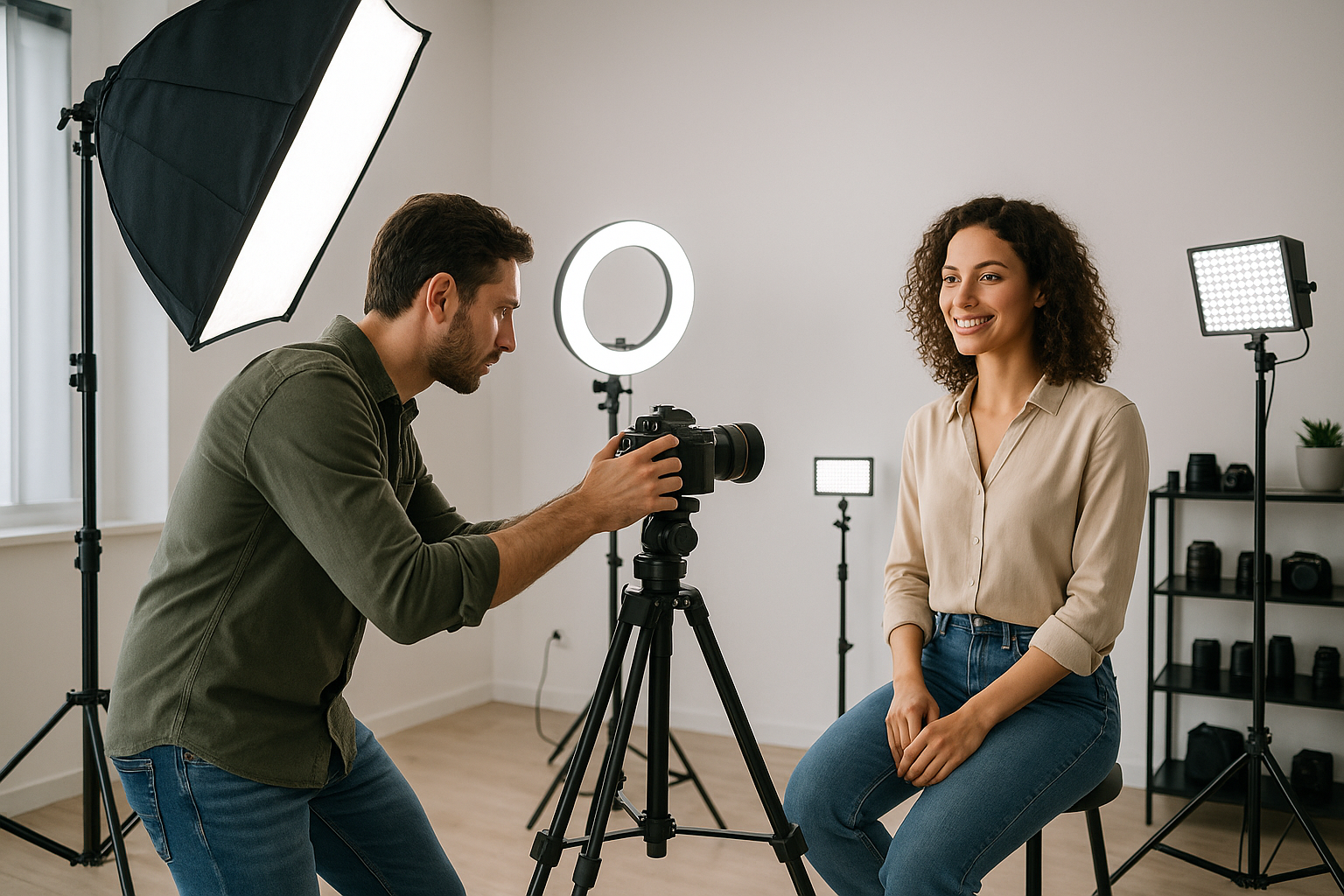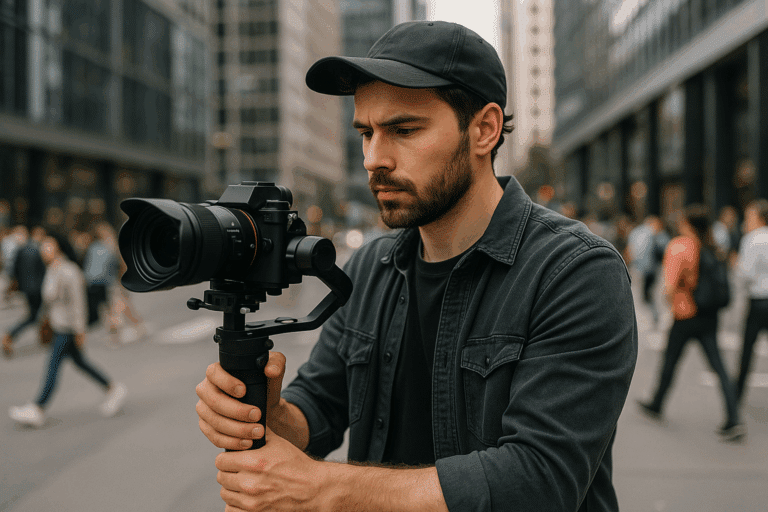Imagine for a moment that you’re a master puppeteer, but instead of strings, your hands manipulate light. 🎭 With a deft flick of your wrist, you mold and sculpt, illuminating your subjects, etching details, and casting expressive shadows. Sounds fascinating, doesn’t it? That’s precisely the magic and allure of professional photography. And yet, so many photographers grapple with one of the most critical aspects of their craft—lighting.
Let’s face it, lighting can be a complex beast to tame. For the uninitiated, it can seem an insurmountable hurdle, teeming with intimidating terms like color temperature, inverse-square law, or softbox diffusion. 😵💫 Fear not, for this article aims to slice through the jargon, shedding light (pun intended) on practical and easy lighting setups you can use to enhance your photos dramatically. 📸
Why Lighting Matters
Before diving into the setups, let’s first illuminate why lighting is so critical. Simply put, photography is the art of capturing light. It’s the key to creating depth, mood, and visual interest. Proper lighting can make your subject pop, adding dimension and texture, while poor lighting can render an otherwise fantastic shot flat and lifeless. 🌑
What to Expect
In this in-depth guide, we will explore several quick and easy lighting setups designed to add a professional touch to your shots. We’ll begin with single light sources, discussing techniques like Rembrandt and loop lighting, and gradually move towards more advanced setups involving multiple light sources.
We’ll also demystify common photography lighting tools like softboxes, umbrellas, and reflectors, explaining when and how to use them effectively. 🌂🔦 Whether you’re shooting in a studio, outdoors, or in a home setting, these setups promise to light up your shots anywhere, anytime.
Lighting Made Easy
We’ll be focusing on techniques that are not only effective but also easy to implement. Whether you’re a seasoned professional seeking to brush up on your skills or a photography enthusiast dipping your toes into the world of professional lighting, this guide is designed to cater to all proficiency levels.
Additionally, we believe that stunning photography needn’t break the bank. Hence, we’ll also discuss budget-friendly lighting options, enabling you to create impactful images without splurging on high-end equipment. 💡💰
Your Journey to Stunning Photos
At the heart of this article lies a commitment to helping you take control of your photographic lighting. While the journey might seem challenging, remember that every expert was once a beginner. Every stunning shot you’ve admired was the result of trial, error, and a thirst for learning. 📚🔬
So, buckle up and join us on this enlightening journey. By the end of this article, you’ll be equipped with a robust toolkit of lighting techniques, ready to light up your shots and create stunning photos. Let’s get started! 🚀
Ignite Your Passion: Lighting Essentials for Photography
Have you ever wished for the ability to transform a seemingly ordinary scene into a breathtaking photograph? With the right lighting techniques, this aspiration can turn into reality. In this article, we’ll delve into quick and easy lighting setups that can create stunning photos anywhere, anytime.
Whether you’re a seasoned photographer or just starting out, understanding the basics of light and how it interacts with your subject is key to capturing excellent photos. Light shapes, defines, and adds depth to your subject. It can turn a flat, uninspiring scene into an image brimming with life and emotion.
Before we jump into the specific lighting setups, let’s quickly cover the fundamental types of light you’ll encounter in photography: natural and artificial. Natural light is the sun’s light, which changes throughout the day, affecting the color, direction, and intensity. Artificial light, on the other hand, includes any light sources you introduce, such as flash, continuous lights, LED panels, or studio strobes.
Natural Light vs. Artificial Light: A Quick Comparison
Each type of light has its strengths and weaknesses, and understanding them can help you make the most out of your shots. Let’s take a look at a comparative table.
| Natural Light | Artificial Light | |
|---|---|---|
| Availability | Depends on time of day and weather conditions | Available anytime, anywhere |
| Control | Limited; depends on external conditions | Full control over intensity, direction, color |
| Cost | Free | Requires investment in equipment |
You can watch this YouTube video titled “Natural Light vs Studio Light – Which is Better?” by PHLEARN for a more detailed comparison.
Lighting Setups that Transform Your Photography
Now that we’ve covered the basics of light and how it impacts your photos, let’s dive into specific lighting setups that you can implement to elevate your shots.
1. Single Light Setup
Starting with the most basic setup, the single light source can be a powerful tool when used correctly. It can be as simple as using the sun as your primary light source or a single flash or strobe in a studio setting. The key to this setup is understanding how to position your subject relative to the light to create the desired mood and depth.
For a detailed walkthrough of a single light setup, check out the video titled “One Light Setup Tutorial” by Adorama on YouTube.
2. Two-Light Setup
Once you’ve mastered the single light setup, you can add another light source to introduce more depth and detail to your subject. The second light can be used as a fill light to lighten the shadows created by the key light or as a rim light to outline and separate the subject from the background.
Be sure to watch the video “Two Light Setup Tutorial” by B&H Photo Video for a step-by-step guide.
Advanced Lighting Techniques for Eye-Catching Photos
If you’re ready to take your lighting skills to the next level, there are more advanced techniques to explore. These methods can help you create unique, compelling images that stand out.
1. High-Speed Sync
High-speed sync (HSS) is a feature found on many external flashes that allows you to shoot with shutter speeds faster than your camera’s sync speed. This technique is useful in situations where you want to use a wide aperture in bright conditions while still using flash.
For a comprehensive guide on high-speed sync, watch the video “High-Speed Sync Explained” by Adorama on YouTube.
2. Rear Curtain Sync
Rear curtain sync is a flash mode where the flash fires just before the rear (second) curtain of the shutter starts to move. This technique can create a sense of motion in your images, with the subject sharply frozen against a blurred background.
To learn more about this technique, watch the video “Rear Curtain Sync Tutorial” by DSLR Video Shooter.
3. Light Painting
Light painting is a creative technique where you use a moving light source to ‘paint’ in your frame while the shutter is open on a long exposure. The result is a dynamic image with stunning streaks of light.
For a comprehensive guide on light painting, watch the video “Light Painting Tutorial” by COOPH on YouTube.
By combining these lighting techniques and setups, you can create a myriad of effects, bringing a new level of depth and emotion to your photography. It’s all about understanding light and using it as your creative tool. So go ahead, experiment, and let light be your guide to stunning photos.

Conclusion
In conclusion, the technical concepts that we’ve explored in this article have the potential to revolutionize how we approach IT and engineering. From the intricate details of Software Development Life Cycle (SDLC), understanding the role of Artificial Intelligence (AI) in data analysis, to the importance of Cybersecurity in the modern world, each topic discussed here holds a significant importance in its own right.
To recap, we started by discussing the SDLC and its various phases – Requirements Gathering, Systems Design, Coding, Testing, Deployment and Maintenance. This process is the backbone of software engineering and understanding each phase can help in delivering a successful project 🎯.
We then delved into the world of AI, exploring how it can aid in data analysis, thereby helping businesses to make informed decisions. AI and machine learning are no longer just buzzwords, but a reality that is transforming industries and our day-to-day life. It’s important to not only understand the concepts, but also to keep abreast with the rapid advancements in this field 🚀.
The final topic was Cybersecurity – an essential component in a world that is becoming increasingly digital. We discussed the different types of threats, their impacts and the importance of implementing robust security measures to protect valuable data. Cybersecurity should not be an afterthought but rather, an integral part of any business strategy 🔒.
It’s important to note that each of these topics is broad and complex, and what we’ve covered here is just the tip of the iceberg. I encourage you to further your knowledge and continue exploring these topics through continued reading and research. Here are some resources that you might find helpful:
– SDLC: [Software Development Life Cycle](https://www.tutorialspoint.com/sdlc/index.htm)
– AI: [Artificial Intelligence and its Role in Data Analysis](https://www.ibm.com/cloud/blog/ai-and-data-analysis)
– Cybersecurity: [Cybersecurity Basics](https://www.cisco.com/c/en/us/products/security/what-is-cybersecurity.html)
Every reader’s contribution adds immense value to the discussion. So, please feel free to comment below, share this article with others in your network, or apply what you’ve learned in your own field. Remember, sharing knowledge is a powerful way to inspire innovation and growth 👏.
In the world of IT and engineering, continuous learning is key to staying relevant and updated. This article aimed to provide a springboard for your exploration. Here’s to your journey of knowledge and discovery 🎓!
In closing, I’d like to quote the late Steve Jobs who said, “Stay hungry, stay foolish”. The world of technology is indeed a wonder to behold, and we should all strive to remain curious and eager to learn 💡.
Remember, it’s not just about gaining knowledge but also applying it effectively. So, get out there and make a difference with what you’ve learned today!
Remember, the more you learn, the more you realize there’s so much more to learn. The journey is as rewarding as the destination. Keep learning and keep growing! 💪
[html]Rodrigo Almeida[html]


